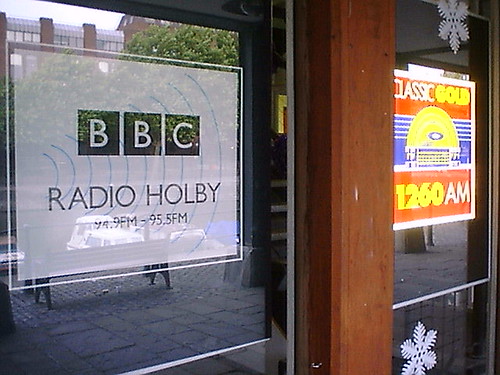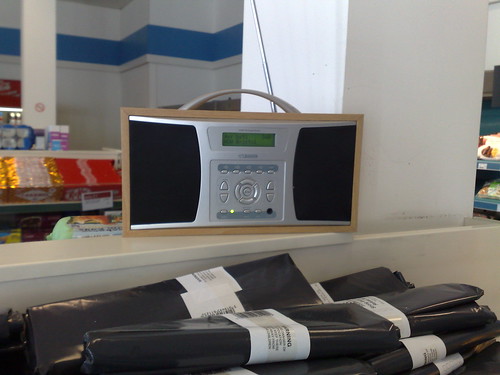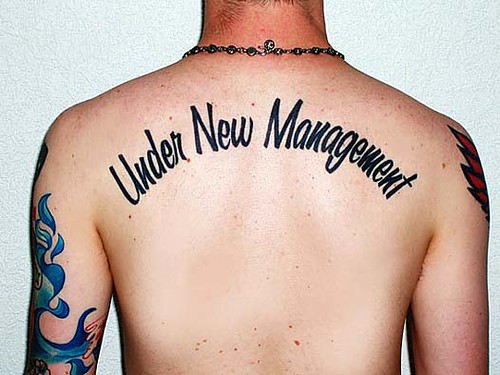
So here’s my brief contribution to the flurry of analysis of Lord Carter’s Digital Britain report.
The biggest news is that we get a target date for switchoff (sorry, “Digital Upgrade”). 2015 is the year we should be flipping the OFF switch on (almost all) analogue radio, and offering universal coverage of DAB. That date can now be plugged into business plans, and financial projections, and hopefully provide the necessary laxative effect to the recently sluggish developments around DAB in the UK.
So, rather than dissect all of the Radio section of the report, which others will do better than I, here are the bits I particularly noted:
It’s a full switch-off (“upgrade”)
Some summaries have suggested that the 2015 deadline only applies to national radio. It doesn’t – it applies to all services being carried on both national and local multiplexes (3b.10). The only thing left on FM post 2015 will be very small scale services; either commercial or community. There is not going to be a dual-speed changeover, which leaves local radio dragging along for years with a foot on each platform. That’s good.
Support for WorldDMB Profile 1
There it is, snuck away in 3b.20 – receivers sold in the UK should be at least WorldDMB Profile 1 compliant. The box on the following page is a little more explicit in saying that we are giving ourselves a migration path to DAB+, which is the smart thing to do. Nobody seriously considers DMB-A (the Frankenstein bodge invented to make an ill-informed decision seem at least slightly less ridiculous) for radio, so let’s ignore that. Some commentators have, incorrectly, said that Profile 1 includes DRM. It doesn’t, and DRM needs to mature a great deal more before it can earn a guaranteed place alongside DAB and DAB+.
Improving Signal Quality
It’s no secret that I don’t believe DAB should be crippled by being forced into universally super-serving a small fragment of the audience that expects ultra-high-quality audio from every radio station. The market can and will decide what audio quality is right for which stations and bearers.
But I do believe that we need to offer robust indoor and handheld coverage to everyone who currently enjoys that from FM now, and by crikey, it’s not rocket science to do it. Australia’s got the right idea – power. And more of it.
There’s some more crypticness in the report. It talks a lot about achieving equivalent coverage prior to 2015, but only in 3b.23 does it explicitly recognise that indoor coverage must be more effective. It also recognises that there’s some cost in achieving network upgrades, but notes that there is opportunity for negotiation between the BBC, multiplex operators and transmission providers. That’s timely, as many of the initial multiplex transmission contracts come up for renewal soon, and knowing with certainty that it’s worth spending money on the infrastructure is very valuable.
Replanning the network
This wasn’t as explict as I had hoped for. There is reference in 3b.26 to giving OFCOM the powers to re-plan and amlgamate multiplex areas, but I would really would like to have seen a more definite commitment to re-plan at a spectrum level to get a step-change in coverage (up) and costs (down). At least there’s a statement that sorting out coverage shouldn’t be as expensive as some people might have made out it could be.
And now – drum roll – the best bit…
In fact, it’s so good, it’s the only bit I’m going to quote verbatim from 3b.31:
Functionality and interactivity must become central to the DAB experience.
EPGs, slideshows, downloading music, as well as pause and rewinding live radio
must be developed and brought to market on a large scale. Broadcasters and
manufacturers must seek to develop and implement digitally delivered in-car
content, such as traffic and travel information.
Well, we waited a decade, and now it’s a formal part of the plan to digitisation. Digital Radio must prove its worth by doing something… digital. If we don’t use the platform and spectrum we’ve been given (and will continue to get for free for a while – 3b. 27) to evolve radio, what’s the point of doing it? Same value, different platform?
If the other parts of Digital Britain are designed to create confidence in building transmission infrastructure, and writing long-term financial plans that support transitionary investment to achieve that, then this is the statement that should create the confidence in investing in a new kind of digital radio, and it’s about a content led experience that’s enabled by a universal, free-to-air technology. If the rest of the report stabilises the ship, and gives it a shove in the right direction, this is the bit that signals the start of true innovation and digital change for radio.




